Audio
https://soundcloud.com/opera-north/il-tabarro-duet-ora-la-notti-michele-giorgetta
2 notes
·
View notes
Audio
https://soundcloud.com/opera-north/il-tabarro-il-fiammifero-acceso
2 notes
·
View notes
Video
youtube
A brand new trailer for our Season of Secrets!
Join Opera North this autumn and uncover a season of secrets. From deep desires and dark untruths to shocking revelations and gruesome revenge, Opera North brings you all the intrigue and high drama you could wish for with Strauss’ great human comedy Der Rosenkavalier; two of Puccini’s triptych of one-act operas, Il tabarro and Suor Angelica; and Britten’s gripping psychological drama Billy Budd.
2 notes
·
View notes
Link
Discover our Autumn season — a season of secrets...
Der Rosenkavalier (Strauss)
Il tabarro/Suor Angelica (Puccini)
Billy Budd (Britten)
0 notes
Text
Love in a bottle...
The love potion. Throughout history, there has existed a fascination with the notion of a magical cure for unrequited love, which, after all, is a universal theme, and something most of us are sure to have experienced first hand at one time or another!
In the ancient world, all kinds of concoctions were prescribed and attempted, involving anything from dried snakes to gladiator sweat, with one of Pliny the Elder’s aphrodisiac recipes including hyena eyes!
In modern day Africa, love potions are still sold on the open market, and in Europe, a brew called ‘Spanish Fly’ can still be purchased – a substance made from ground-up beetles which is actually highly dangerous.
Thankfully, our hero Nemorino is sold nothing more harmful than a bottle of cheap red wine as an elixir to win the heart of his beloved Adina. L’elisir d’amore, Donizetti’s best-loved comic opera, remains one of the most notable uses of the ‘love potion’ in a piece of art , but this theme of ‘love in a bottle’ crops up again in again in literature, film and popular culture.
Here are our favourite ‘love potion’ moments below, tweet us @opera_north to share yours!

‘The Love Potion’ by Evelyn de Morgan, 1903
Tristan & Isolde
In Wagner’s epic masterpiece based on the Celtic legend Tristan and Iseult, the hero and heroine both drink what they believe to be poison (as Isolde’s revenge for Tristan’s betrayal), but is actually a love potion cunningly prepared by her maid Brangane. The pair fall passionately in love, which causes all sorts of trouble – jealousy, revenge, betrayal etc (standard Wagner). Here, Tristan and Isolde declare their love in a passionate duet:
youtube
The legend of Tristan and Isolde features in L’elisir d’amore, and suggests to Nemorino that a love potion may be the answer to his prayers…
A Midsummer Night’s Dream
In Shakespeare’s comedy, the twists and turns of the plot hinge of the use and abuse of mysterious love potions! Fairy King Oberon, to shame and avenge himself on his wife, orders servant Puck to prepare a special concoction that will cause her to fall in love with the next living thing she sees. This turns out to be Bottom, who has also fallen foul of Puck’s mischief and been temporarily transformed into a donkey!
“Yet mark'd I where the bolt of Cupid fell:
It fell upon a little western flower,
Before milk-white, now purple with love's wound,
And maidens call it love-in-idleness.
Fetch me that flower; the herb I shew'd thee once:
The juice of it on sleeping eye-lids laid
Will make or man or woman madly dote
Upon the next live creature that it sees.
Fetch me this herb; and be thou here again
Ere the leviathan can swim a league.”
A Midsummer Night’s Dream Act II Sc1 (Oberon)

Tytania & Bottom in Opera North’s production of Britten’s A Midsummer Night's Dream (2013). Photo credit: Tristram Kenton.
The Legend of King Arthur
Aurthurian legend tells of an infamous use of a love potion, with bitter consequences! According to the Vulgate Merlin (part of the Lancelot-Grail, 13th Century), Queen Guinevere had an identical-looking half sister also named Guinevere. She conspired to give King Arthur a love potion, causing him to fall in love with her, the false Guinevere, and condemn his real wife to death as an imposter!
Several months later, the false Guinevere apparently fell mysteriously ill, and believing that God was punishing her, confessed to the deception. The real Guinivere took some persuading to forgive her husband, and declared that Lancelot, who had stood by her through the ordeal and who (she believed) would never have been deceived by a mere potion, was her true champion.

‘The Last Meeting of Lancelot and Guinevere’ by Dante Gabriel Rossetti, 1854
Love Potion #9
The 1992 film (inspired by the famous song) starring Sandra Bullock and Tate Donovan tells the story two scientists, neither of whom have much luck in the dating department, who scientifically analyse an alleged ‘love potion’ and discover that it has genuine bio-chemical effects. They start to experiment on themselves and both suddenly become irresistible, which causes more complications than they could have imagined…
youtube
Harry Potter
In the J.K. Rowling’s magical world of Harry Potter, the presence of ‘love potions’ is fairly inevitable! One amusing incident in Harry Potter and the Half-Blood Prince saw Ron Weasley fall victim to a mis-directed love potion through eating a ‘spiked’ box of chocolates, and become suddenly smitten with Romilda Vane, whom he had never actually met…
youtube
In the series, it is interesting to note that love potions cause feelings more akin to obsession than affection, as it is believed that true love cannot be produced through artificial means:
“Powerful infatuations can be produced by the skilled potioneer, but never yet has anyone managed to create the truly unbreakable, eternal, unconditional attachment that alone can be called love”
Hector Dagworth-Granger on love potions
And so we see time and again, that that mysterious, magical, yet materialistic ‘love potion’ can never conjure up genuine love, a force more powerful than any sourcery, and that the instigator often gets more than enough come-uppence for daring to meddle! However...
Try our own ‘love potion’...
Opera North is delighted to be teaming up with Pintura Bar & Kitchen this season to bring you an extra special treat: the L’elisir d’amore cocktail!
A twist on a classic Paloma, this exciting fusion of tequila, Pamplemousse and pink grapefruit will, unlike some other love potions, cause you no trouble at all and bring you only happy-ever-afters... Priced at just £5 for L’elisir d’amore ticket holders, what better way to continue the post-finale fun?
Find out more...
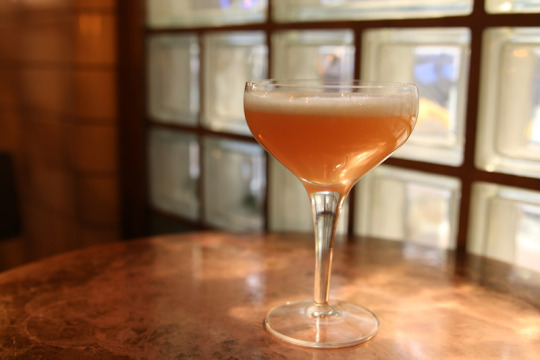
L’elisir d’amore opens at Leeds Grand Theatre on Wednesday 17 February 2016 before touring to Newcastle Theatre Royal, Nottingham Theatre Royal and The Lowry, Salford Quays during March. To find out more, visit our website.
#ONElisir#l'elisir d'amore#donizetti#love potion#shakespeare#a midsummer night's dream#wagner#tristan and isolde#shrek2#harry potter#ron weasley#love potion no. 9
4 notes
·
View notes
Audio
https://soundcloud.com/opera-north/lelisir-resource-due-servitori
0 notes
Audio
https://soundcloud.com/opera-north/lelisir-resource-doctor-dulcamara
0 notes
Text
Andrea Chénier: Inspirations...
We caught up with designer Joanna Parker who talked us through some of the works of art that she had found particularly relevant and inspirational when conceiving and designing Opera North’s new production of Giordano’s Andrea Chénier.

Jacques Louis David: The Death of Bara (1794)
This unfinished painting by the greatest artist of the Revolution shows Joseph Bara, a young drummer boy in the Republican Army who was killed by Royalist insurgents during the War in the Vendée in December 1793.
Accounts of his having been put to death because he refused to surrender the horses he was leading were embellished by Robespierre and others as propaganda. The legend arose that, having been trapped by the enemy and being ordered to cry "Vive le Roi" ("Long live the King") to save his life, he chose instead to die crying "Vive la République" ("Long live the Republic").
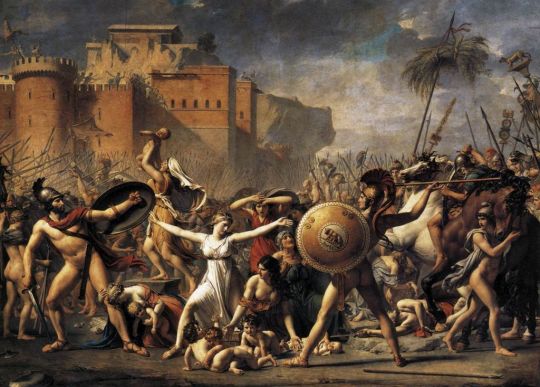
Jacques Louis David: The Intervention of the Sabine Women (1799)
The pinnacle of David’s heroic, neoclassical style, this painting shows the Sabine Women interposing themselves between the warring armies of their own tribe and Rome, ending the battle and uniting the Roman nation.
Imprisoned after Robespierre's downfall, David was visited by his royalist ex-wife, who had divorced him over his vote for the death of Louis XVI. He was inspired to paint the work in honour of her, and as a symbol of love prevailing over conflict in France at large.
JP: “We were particularly interested in exploring the physical language in paintings such as this - the extension of the body, the importance of gesture and the monumental form. David’s return to classicism also suggests a historic, heroic precedent for the events of the Revolution: history repeating itself.”

Jacques Louis David: Study for The Oath of the Horatii, Sabina (1783)
Painted in the years before the Revolution, David’s Oath of the Horatii is based on another Roman legend derived from Livy, and again refers to the suffering of women in conflict. This study depicts a grief-stricken figure who can be seen on the right of the final composition.
JP: “Once again, the power of gesture is foremost: David explores the possibilities of storytelling through the physical language of the body, something we’ll also be attempting.”
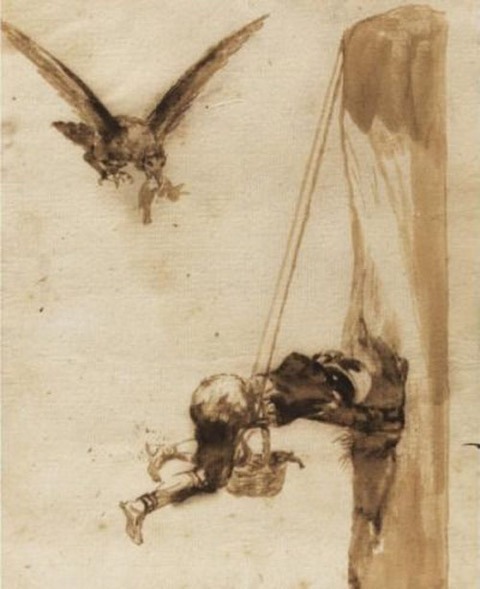
Francisco Goya: The Eagle Hunter (c.1819)
In The Disasters of War (1810-1820) the great Spanish painter and printmaker lays bare the human cost of his country’s conflict with Revolutionary France in 82 prints, which retain their power to shock to this day.
This tragicomic depiction of a peasant robbing an eagle’s nest comes from the same late period. It is at once humorous and terrible, like much of his work at the time an allegory for human frailty and foolishness.
JP: “It is not possible to represent the Terror. All we can do is allude to it in an oblique way. We can see how artists of the period tried to give a sense of what was happening around them, in this nightmarish Goya sketch for example.”

George Cruikshank: The Radical’s Arms (1819)
The Revolution sparked fierce debate in Britain, with Edmund Burke’s condemnation in Reflections on the Revolution in France (1791) quickly countered by Mary Wollstonecroft’s Vindication of the Rights of Men and Thomas Paine’s Rights of Man.
This caricature shows a sensationalist, conservative British reaction during the Napoleonic era. Cruikshank warns of the danger of the ‘natural order’ being overturned in England as it had in France, with a burning globe tipped upside-down and the degenerate radicals’ motto 'No God! No Religion! No King! No Constitution.'

Cy Twombly: Venus and Adonis (1978)
An American abstract painter who spent much of his life in Italy, Twombly, like David, drew on classical myth for his themes. His paintings are often entirely composed of scrawled writing reminiscent of graffiti. Scatalogical elements like the childish phallus seen here, or the obscene language in Olympia (1957) undercut the lofty subject matter.
JP: “We will be exploring themes of graffiti in the French Revolution. The idea of making a mark is symbolic of the essence of the Revolution. People were empowered by the physical act of writing, and there was a sense of people using the streets to post their own slogans.”
Director Annabel Arden will be joined by art historian and graffiti expert Dr Richard Clay for a detailed discussion of this aspect of the background to Chénier in Revolution! at the Howard Assembly Room on Thursday 14 January.
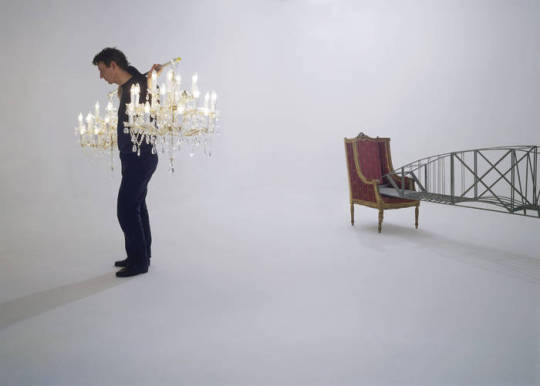
Stephan Huber: Arbeiten im Reichtum (1983)
German artist Stephan Huber (b.1952) plays with scale and materials, often placing recognisable objects in unusual and disorientating situations in his installations.
JP: "This contemporary work perfectly expresses the weight of servitude as evident in the disparity between the aristocracy and their servants in the opera.”
Our NEW production of Andrea Chénier opens on 19 January 2016 at Leeds Grand Theatre, before touring the north of England. For tickets and more information, please visit our website.
#Andrea Chénier#ONChenier#opera#operanorth#french revolution#jacques louis david#francisco goya#cy twombly#stephanhuber
3 notes
·
View notes
Text
Così fan tutte: Things you never knew...
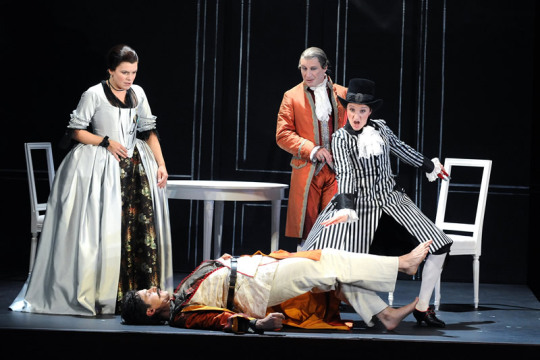
Scandals, rivalry and feuds — the secrets of Mozart’s opera Così fan tutte exposed!
The storyline of Così fan tutte, based around infidelity, was considered very scandalous in the 19th Century. Therefore anytime the opera was performed it was accompanied by an apology for the frivolous plot, altered or sometimes completely rewritten!
In 1994, two works by Mozart’s contemporary Antonio Salieri were discovered, showing that Salieri also attempted to set the libretto of Così fan tutte to music, but did not complete the project.
The full title, Così fan tutte, ossia La scuola degli amanti translates as ‘Thus do all [women], or The School for Lovers’ but it is often simplified to ‘Women are like that.’ The words are sung by the men in Act II, just before the finale. Librettist da Ponte had also used the line ‘Così fan tutte le belle’ previously in The Marriage of Figaro.
Mozart’s own life slightly resembled the story of Così fan tutte for a time – a few years before he married his wife Constanze Weber, he was engaged to her sister Aloysia.
Mozart created the role of Fiordiligi for da Ponte's mistress Adriana Ferrarese del Bene. However, he disliked her intensely, and, knowing her idiosyncratic tendency to drop her chin on low notes and throw back her head on high ones, he filled her showpiece aria ‘Come scoglio’ (‘Like a rock/fortress’) with constant leaps from low to high and high to low in order to make the prima donna’s head "bob like a chicken" onstage!
youtube
Così fan tutte opens at Opera North on 3 February 2016. Visit our website to buy tickets or for more infomation.
Top image: Così fan tutte at Opera North in 2009. Photo credit Tristram Kenton
32 notes
·
View notes
Text
Comme un dernier rayon | Andre Chénier
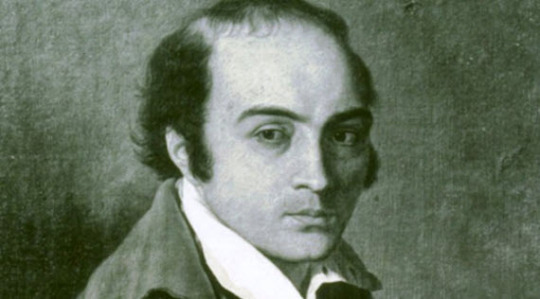
All the great arias in Giordano’s Andrea Chénier are drawn from the original poet’s work.
In particular, Chénier’s final aria, 'Come un bel dì di maggio', sung as he waits to mount the scaffold, is taken directly from Andre Chénier’s final poem - a work of formal beauty and moral fury penned on the eve of his execution.
Read a translation of this poem below.
Translation by Stephen Romer
Comme un dernier rayon … (As a last ray)
At sunset, in the last level ray
In a warm breeze
Where the black scaffold looms
I try these notes…
It may be my turn soon, who can say,
When my name is called
And they come for me,
The forced march down the dark corridor
And my spectral cellmates
Who knew me here, will know me no more.
Will there be no one left
To remember these murdered innocents
To console the orphans and the wives,
The legions of the bereft?
Suffer then, O heart swelled with hatred
And hungry for Justice, smother your cry.
And Virtue, weep for me, if I should die.
Portrait during Chénier’s last captivity by Suvée
0 notes
Audio
https://soundcloud.com/opera-north/opera-north-making-the-creative-case
1 note
·
View note
Text
Famous Andrea Chéniers
When Umberto Giordano cast rising Italian tenor Giuseppe Borgatti in the title role of Andrea Chénier, the first performance immediately propelled him to stardom. And no wonder — the role is colossal in size, heroic, tragic, intensely emotional, and features some of the most magnificent lyric-dramatic music ever written for the tenor voice!
Here is a selection of ‘Andrea Chéniers’ who have truly made their mark on this extra-ordinary role…
Giuseppe Borgatti
Borgatti was the original Andrea Chénier, cast by the composer in 1896 for the opera’s premiere at the home of Italian opera — La Scala, Milan. His triumph in the role propelled him to the front rank of Italian opera singers.
Although he made no recordings of Chénier, Borgatti is described in contemporary reviews of his performances as having abundant reserves of stamina and a smooth, well-schooled voice of robust size…

Interestingly, it was not Italian opera that was to define Borgatti’s career. Instead, he became one of the leading Wagner interpreters of his era and in 1904, became the first Italian tenor to appear at the shrine to Wagnerian opera, Bayreuth Festival.
Mario del Monaco
Mario del Monaco established himself as one of four Italian tenor superstars who reached the peak of their fame in the 1950s and ‘60s. He pioneered a new vocal technique of ‘lowering the larynx’, enabling him to sing with great power throughout his whole vocal range.
Andrea Chénier was a trademark role for del Monaco. So much so, that he made a total of THREE recordings of the opera — one studio recording in 1957 with soprano Renata Tebaldi, and two live recordings – from Milan in 1955, and Tokyo in 1961. Listen to Mario del Monaco sing Chénier’s Act I aria ‘Un di all’azzuro spazio’ here...

Franco Corelli
Dubbed the ‘Prince of Tenors’, Franco Corelli possessed a rich and ringing tenor voice, a charismatic stage presence and movie-star good looks. Also enjoying a major international opera career in the 1950s and ‘60s, he studied the vocal technique of his precedent del Monaco, but modified it to produce greater subtlety in vocal tone and dynamics — a strategy which transformed him into an operatic legend.
Having had great success in the role of Andrea Chénier, Corelli made both a live recording of the opera in 1960, and a studio recording in 1963. Listen to Corelli sing Chénier’s epic Act I aria here...

Placido Domingo
Among the next generation of tenors, the inimitable Plácido Domingo, a household name both then and now, became the foremost interpreter of the role of Andrea Chénier.
Domingo made a studio recording in 1976, and a TV film of the opera in 1981. Listen to Domingo’s interpretation of Andrea Chénier here...

As his voice has lowered over the years, Domingo, in his third career as a baritone (following that of tenor and conductor) has performed arias sung by Chénier’s rival, Gérard, in concert. Listen to Domingo’s rendition of Gérard’s tortured ‘Nemico della Patria’ here...
Jonas Kaufmann
In January 2014, German superstar tenor Jonas Kaufmann made his Andrea Chénier role debut at London’s Royal Opera House, to critical acclaim. Praised for his voal warmth and colours, he was also described as ‘the best thing which has happened to breeches since Colin Firth's Mr Darcy’! (The Times)
During the run, a performance of Andrea Chénier was screened live in hundreds of cinemas around the world. Listen to Kaufmann and soprano Eva-Maria Westbroek perform the opera’s final duet here...

Andrea Chénier at Opera North
This Winter (2016), Opera North will perform Giordano’s masterpiece Andrea Chénier for the very first time. Directed by Annabel Arden (co-founder of Théâtre de Complicité), the production will explore the chaos of revolution and examine the role of the artist in a time of social and political turmoil.
Mexican tenor Rafael Rojas will be taking on the title role, making a much anticipated role debut. Rojas was awarded the Domingo prize at the Placido Domingo competition in 1995, and has had great success with Puccini (Tosca, Girl of the Golden West) at Opera North in recent years. He will sing opposite Dutch soprano Annemarie Kremer as the heroine Maddalena, and British baritone Robert Hayward as the formidable Gérard...

Andrea Chénier opens at Leeds Grand Theatre on Tuesday 19 January 2016 at Leeds Grand Theatre and tours to Theatre Royal, Newcastle, Theatre Royal Nottingham and the Lowry, Salford Quays. For more information and to buy tickets, please visit our website.
#Opera North#opera#andrea chénier#tenor#french revolution#giordano#placido domingo#franco corelli#jonas kaufmann#verismo
6 notes
·
View notes
Text
A bear-y hungry Paddington Bear

People up and down the country have been inspired by the Great British Bake Off – but what about bears? This season Huddersfield Town Hall has a very special visitor – Paddington Bear. But what should we feed this hungry little bear when he arrives? Below we’ve put together a sample menu, and of course no recipe is complete without his favourite ingredient: marmalade.
Paddington Bear’s visit to Yorkshire:
Starter
James Martin’s Roasted cod with kumquat marmalade and green pepper dressing, served on a bed of watercress
Recipe here...
Main
The Hairy Biker’s Duck a l’orange, roasted potatoes, green beans, chantenay carrots and a marmalade sandwich on the side
Recipe here...
Pudding
Paul Hollywood’s Marmalade and Almond Cake with custard
Recipe here...
Why not try the recipes, or create your own Paddington Bear-inspired menu and let us know how you get on!
Paddington Bear’s First Concert is at Huddersfield Town Hall at 3pm on Sunday 25th October. Sticky bears may be extra but tickets for children aged 13 and under are just £1. Adult tickets are from £10 and can be booked through Kirklees Box Office on 01484 223200 or online at kirkleestownhalls.co.uk
Paddington Bear is originally created by Michael Bond.
1 note
·
View note
Text
The Barber of Seville: 5 Facts You Must Know!

1.) Figaro! Figaro! Figaro! Figaroooooo!
If you were to ask someone on the street to sing something from an opera, we bet a fair number would come back with: ‘Figaro! Figaro! Figaro! Figaroooo’... And they’d be right! What they may not know, however, is that the aria ‘Largo al factotum della città’ (its original title), is not from The Marriage of Figaro, rather from Rossini’s The Barber of Seville! Have a listen!
youtube
Which brings us to our next fun bit of trivia...
2) The prequel to The Marriage of Figaro?
French playwright Pierre Beaumarchais wrote a series of three plays:
1.) The Barber of Seville | 2.) The Marriage of Figaro | 3.) The Guilty Mother
Later turned into operas, they were all based around the delightfully cunning character called ‘Figaro’. And it’s in The Barber of Seville that we’re first introduced to the beautiful Rosina, later known as the Countess in Mozart’s The Marriage of Figaro.
3.) Vocal Gymnastics
Rossini is somewhat notorious for his incredibly difficult and FAST vocal lines! Rightfully acknowledged as one of the hardest arias in the tenor repertoire, have a listen and take a look at Count Almaviva’s ‘Ecco, ridente in cielo’ ...
If this aria had a hashtag, it would be this: #SingAllTheNotes.

4.) Bugs Bunny & The Overture
That’s right – we can credit Bugs Bunny for helping The Barber of Seville‘s overture make its way onto the TVs (and into the hearts) of many. Immediately recognisable and delightfully energetic, we dare you to watch ‘The Rabbit of Seville’ without cracking a huge smile.
youtube
5.) 1st is the worst, 2nd is the best...
It’s almost impossible to imagine, but in 1816 when The Barber of Seville was first performed, it was was met with a roar of disapproving boos. Famously, on the second night, Rossini was so upset he locked himself in his room and and almost refused to come out. Thankfully, it was the audience’s thunderous applause he heard this time around – the opera was a total success!
Perhaps a good lesson to us all... if at first you don’t succeed, try and try again!

The Barber of Seville opens at Leeds Grand Theatre on 7 October. For more performance dates and venues, please visit our website.
4 notes
·
View notes
Link
Igor Stravinsky was born on June 17th 1882. To celebrate his birth, we thought we'd show you just how cool of a cat Mr. Stravinsky was...
1 note
·
View note